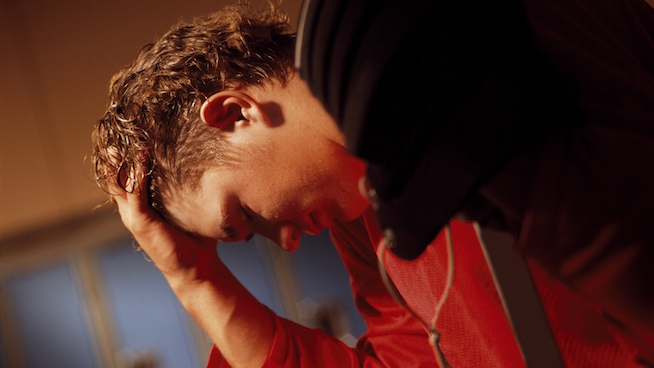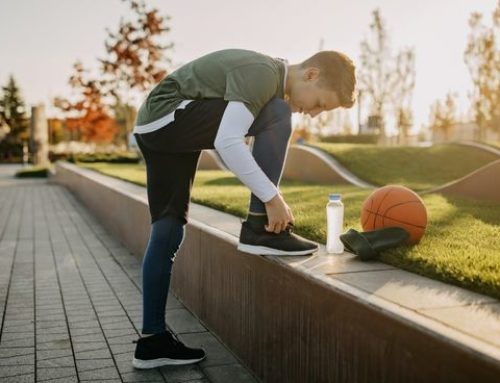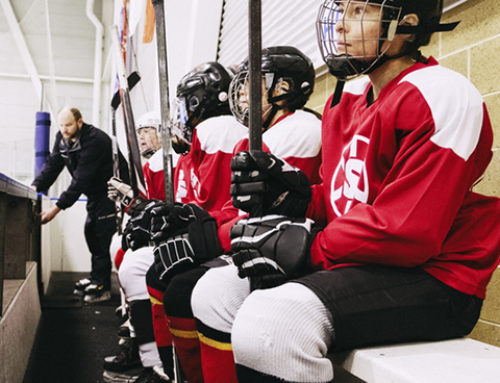Five Reasons to Go Back to Basics With the Jump Rope
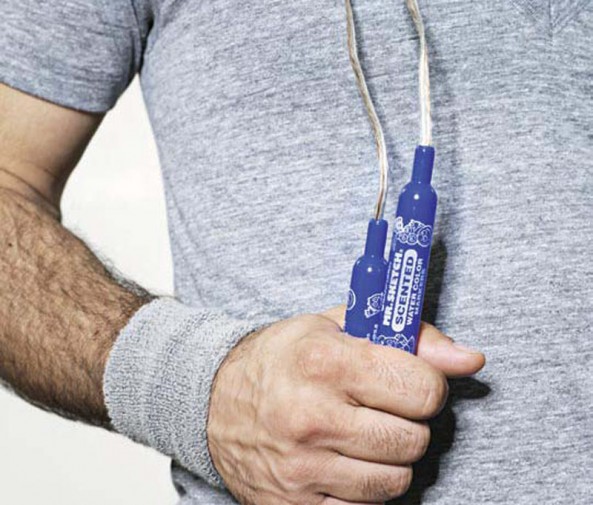
A staple of elementary school gym classes, the Jump Rope is one of the first exercises athletes perform. It takes you back to the basics, enhancing cardio capacity, coordination, speed, core stability and lower leg strength. Despite its humble origins, many professional athletes and champions use the Jump Role to push themselves to supreme levels of athleticism.
Derive the following benefits from the Jump Rope by incorporating it into your future workouts.
1. Convenience
A Jump Rope is small and lightweight, making it extremely portable and efficient—easy to stuff in your gym bag as you head out for a team workout. A Jump Rope also fits well with any exercise regimen. Whether you’re challenging strength, stability, power—or all of the above—jumping rope is an ideal exercise to perform between sets to keep your heart rate up and calories burning.
2. Coordination
Athletes with trophies on their mantels and D-I scholarships don’t generally trip over their own feet. Why? Because most elite athletes integrate the Jump Rope into their routines. Here’s where it gets fun: hop on one foot, change feet every three hops, jump high enough for two revolutions under your feet in one jump. Whatever you do, changing your rhythm and style of jumping will improve your coordination. You’ll be the one faking out opponents and making them trip over themselves.
3. Speed
How you use the Jump Rope will determine what you gain from it. If you lethargically hop your way through a routine, you probably won’t benefit much. But if you push yourself, continuously upping the speed as you progress through a session, you’ll notice improvements in all facets of your speed—quickness, agility and reaction time.
Breaking down what happens with the Jump Rope, as soon as your feet contact the ground, you immediately jump back into the air to avoid tripping on the rope. The repetition develops speed by training your body to react explosively every time you touch down. Speedy point guards and running backs don’t hit the ground with cement block feet. They’re constantly moving until the end of the play, just like in a Jump Rope workout.
4. Strength
Most sports involve lots of pounding on the feet and ankles. Weak ankles don’t last long, regardless of the playing surface. Jumping rope simulates the constant pounding of competition, strengthening both the feet and ankles. To increase the challenge, try jumping rope barefooted, but make sure to start off on grass or a rubberized surface. Doing your first shoeless Jump Rope workout on the hardwood is like performing your first Bench Press without a spotter. Be smart so you can surpass your opponents’ level of strength without risking injury.
5. Stability
Avoiding a sprained ankle in a game is like avoiding illness in a hospital. You’re at risk as soon as you arrive. That’s why athletes must challenge their ankle stability in a safe and controlled environment. Jumping rope accomplishes exactly that. Once you’re comfortable jumping with two feet, try one foot at a time to train your ankles to absorb the stress of your entire body on each side. Think about the times you’ve landed awkwardly in a game. Single-Leg Jump Rope will help prepare you to land securely and avoid icing your ankle on the sidelines.
The Jump Rope is part of most successful athletes’ training regimens. Case in point: the University of Illinois wrestling team [learn more about their workout here]. Jim Zielinski, head strength and conditioning coach, has his athletes skip rope for five minutes—switching between Double- and Single-Leg Hops—before their weight lifting sessions. “It’s a great way to get your heart rate up and muscles warm before a lift,” he says. During the off-season, Illini grapplers perform the following Jump Rope routine immediately before workouts on Monday, Wednesday and Friday.
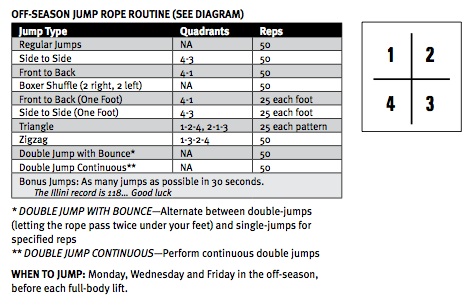
Zielinski on the Routine: “With any jump rope routine we do, we emphasize spending as little time on the ground as possible between jumps. Stay up on the balls of your feet the whole time, and when you are doing any lateral movement, keep most of your weight on the instep and big toe without letting your ankle roll. When you jump from one square to another, don’t think about how much distance you cover, think about jumping as quickly as you can. This whole routine shouldn’t take more than 12 minutes. It takes longer at first, but as you progress, you will get through it quicker and quicker.”
Going back to the basics with this versatile exercise will improve all levels of fitness. Integrate Jump Rope into your workout, so you, too, can float like a butterfly and sting like a bee!
RECOMMENDED FOR YOU
MOST POPULAR
Five Reasons to Go Back to Basics With the Jump Rope

A staple of elementary school gym classes, the Jump Rope is one of the first exercises athletes perform. It takes you back to the basics, enhancing cardio capacity, coordination, speed, core stability and lower leg strength. Despite its humble origins, many professional athletes and champions use the Jump Role to push themselves to supreme levels of athleticism.
Derive the following benefits from the Jump Rope by incorporating it into your future workouts.
1. Convenience
A Jump Rope is small and lightweight, making it extremely portable and efficient—easy to stuff in your gym bag as you head out for a team workout. A Jump Rope also fits well with any exercise regimen. Whether you’re challenging strength, stability, power—or all of the above—jumping rope is an ideal exercise to perform between sets to keep your heart rate up and calories burning.
2. Coordination
Athletes with trophies on their mantels and D-I scholarships don’t generally trip over their own feet. Why? Because most elite athletes integrate the Jump Rope into their routines. Here’s where it gets fun: hop on one foot, change feet every three hops, jump high enough for two revolutions under your feet in one jump. Whatever you do, changing your rhythm and style of jumping will improve your coordination. You’ll be the one faking out opponents and making them trip over themselves.
3. Speed
How you use the Jump Rope will determine what you gain from it. If you lethargically hop your way through a routine, you probably won’t benefit much. But if you push yourself, continuously upping the speed as you progress through a session, you’ll notice improvements in all facets of your speed—quickness, agility and reaction time.
Breaking down what happens with the Jump Rope, as soon as your feet contact the ground, you immediately jump back into the air to avoid tripping on the rope. The repetition develops speed by training your body to react explosively every time you touch down. Speedy point guards and running backs don’t hit the ground with cement block feet. They’re constantly moving until the end of the play, just like in a Jump Rope workout.
4. Strength
Most sports involve lots of pounding on the feet and ankles. Weak ankles don’t last long, regardless of the playing surface. Jumping rope simulates the constant pounding of competition, strengthening both the feet and ankles. To increase the challenge, try jumping rope barefooted, but make sure to start off on grass or a rubberized surface. Doing your first shoeless Jump Rope workout on the hardwood is like performing your first Bench Press without a spotter. Be smart so you can surpass your opponents’ level of strength without risking injury.
5. Stability
Avoiding a sprained ankle in a game is like avoiding illness in a hospital. You’re at risk as soon as you arrive. That’s why athletes must challenge their ankle stability in a safe and controlled environment. Jumping rope accomplishes exactly that. Once you’re comfortable jumping with two feet, try one foot at a time to train your ankles to absorb the stress of your entire body on each side. Think about the times you’ve landed awkwardly in a game. Single-Leg Jump Rope will help prepare you to land securely and avoid icing your ankle on the sidelines.
The Jump Rope is part of most successful athletes’ training regimens. Case in point: the University of Illinois wrestling team [learn more about their workout here]. Jim Zielinski, head strength and conditioning coach, has his athletes skip rope for five minutes—switching between Double- and Single-Leg Hops—before their weight lifting sessions. “It’s a great way to get your heart rate up and muscles warm before a lift,” he says. During the off-season, Illini grapplers perform the following Jump Rope routine immediately before workouts on Monday, Wednesday and Friday.

Zielinski on the Routine: “With any jump rope routine we do, we emphasize spending as little time on the ground as possible between jumps. Stay up on the balls of your feet the whole time, and when you are doing any lateral movement, keep most of your weight on the instep and big toe without letting your ankle roll. When you jump from one square to another, don’t think about how much distance you cover, think about jumping as quickly as you can. This whole routine shouldn’t take more than 12 minutes. It takes longer at first, but as you progress, you will get through it quicker and quicker.”
Going back to the basics with this versatile exercise will improve all levels of fitness. Integrate Jump Rope into your workout, so you, too, can float like a butterfly and sting like a bee!


